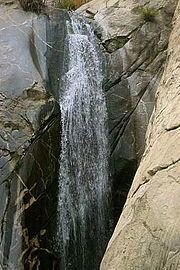Floor elevation 351 ft (107 m) Area 209 ha | Watercourses Tahquitz Creek | |
 | ||
Location San Jacinto MountainsPalm Springs, California Watercourse Tahquitz Creek Golf Resort Similar Indian Canyons, Palm Springs Aerial Tra, San Jacinto Mountains, Agua Caliente Casino R, Moorten Botanical Garden a | ||
Hiking tahquitz canyon palm springs ca
Tahquitz Canyon is located in Southern California in the Coachella Valley near Palm Springs, California. It has been continually inhabited for at least 2,000 years by the Cahuilla tribe of Native Americans. It is one of many canyons of cultural significance to the Agua Caliente Band of Cahuilla Indians.
Contents
- Hiking tahquitz canyon palm springs ca
- Map of Tahquitz Canyon California USA
- Legend of TahquitzEdit
- History of human occupationEdit
- Reintroduced wildlifeEdit
- Desert PlaysEdit
- In filmEdit
- Visitors Center and hiking trailEdit
- References
Map of Tahquitz Canyon, California, USA
Legend of TahquitzEdit
Tahquitz Canyon is an important location in the creation myths of the Agua Caliente band. Although the legend comes in many versions, most regard Tahquitz as a powerful nukatam, roughly "Shaman," who was created directly by the creator of the world, Mukat. He became obsessed with a young woman whom he kidnapped and took to Tahquitz canyon, where they lived for several years. Due to her continued unhappiness, Tahquitz allowed her to leave on the condition that she not tell her people what had transpired. She disregarded this warning and was consequently struck dead by Tahquitz' power. The legend states that Tahquitz himself is immortal, that he still imparts power to worthy nukatam, and that he steals the souls of those who venture too far into his canyon at night. He is said to be the cause of the earthquakes in the area, and to reveal himself as a bright ball of green light or a meteor. Other versions of the legend report that Tahquitz was a normal man who gained his powers when he fled his people, as opposed to being directly created by Mukat.
History of human occupationEdit
In the late Quaternary period, the Colorado river had sometimes discharged its waters not into the Gulf of California as it currently does, but into the Salton Basin. This resultant body of water, known as Lake Cahuilla, was a major food supplier to the indigenous people of the area, supporting large populations of fish and migratory birds. The Salton Sea currently occupies the bottom of the former Lake Cahuilla.
At some point in the past few thousand years, Lake Cahuilla disappeared, and easy access to fresh water, fish, and fowl along with it. This forced the Cahuilla Indians in the area to relocate to new sources of water. Along with Andreas Canyon, Palm Canyon, and Murray Canyon, Tahquitz Canyon was one such location.
Indians living in the canyon created various petroglyphs, most of which are lost today.
Reintroduced wildlifeEdit
In 2010, researchers from the San Diego Zoo, U.S. Fish and Wildlife Service, and California Department of Fish and Game reintroduced the endangered Mountain yellow-legged frog into Tahquitz Creek after it had been rediscovered in 2009.
Desert PlaysEdit
From 1921 through 1930 the canyon was used for outdoor plays. The series of three Desert Plays featured Fire and The Arrow Maker by Mary Hunter Austin and one based on the legend of Tahquitz, written by Garnet Holme.
In filmEdit
The Tahquitz Falls were used as a scene in Frank Capra's 1937 film, Lost Horizon.
Visitor's Center and hiking trailEdit
The Agua Caliente Band maintains a visitor's center and hiking trail for the canyon. The trail is a two-mile loop which leads to Tahquitz Falls and back.
